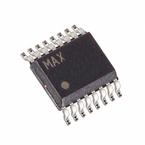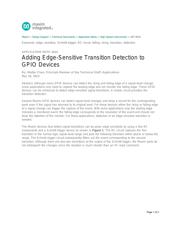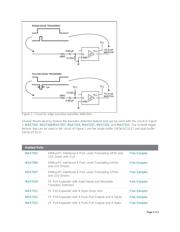
Maxim > Design Support > Technical Documents > Application Notes > High-Speed Interconnect > APP 4634
Keywords: edge, sensitive, Schmitt trigger, RC circuit, falling, rising, transition, detection
APPLICATION NOTE 4634
Adding Edge-Sensitive Transition Detection to
GPIO Devices
By: Walter Chen, Principle Member of the Technical Staff, Applications
Mar 18, 2013
Abstract: Although many GPIO devices can detect the rising and falling edge of a signal-level change,
some applications only need to capture the leading edge and not monitor the falling edge. These GPIO
devices can be enhanced to detect edge-sensitive signal transitions. A simple circuit provides the
transition detection.
Several Maxim GPIO devices can detect signal-level changes and keep a record for the corresponding
ports even if the signal has returned to its original level. For these devices either the rising or falling edge
of a signal change can trigger the capture of the event. With some applications only the leading edge
indicates a monitored event; the falling edge corresponds to the resolution of the event and should not
draw the attention of the monitor. For these applications, detection of an edge-sensitive transition is
needed.
The Maxim devices that detect signal transitions can be given edge sensitivity by using a few RC
components and a Schmitt trigger device as shown in Figure 1. The RC circuit captures the first
transition in the normal logic signal-level range and puts the following transition either above or below the
range. The Schmitt trigger circuit subsequently filters out the event corresponding to the second
transition. Although there are also two transitions at the output of the Schmitt trigger, the Maxim parts do
not distinguish the changes since the duration is much shorter than an I²C-read command.
Page 1 of 3





